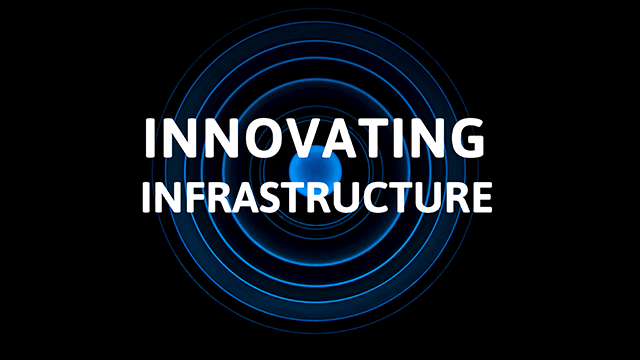916 results found
Featured results



More results
The GI Hub today launches a shorthand cost-benefit analysis tool for analysing the environmental, social, and economic (ESE) benefits of bus transport projects.
Innovating Infrastructure is a new podcast from the GI Hub that showcases new and emerging technology-based solutions to infrastructure challenges. Hosted by GI Hub’s Director of Thought Leadership, Monica Bennett the ten-part series delves deep into these solutions to find out how they will create impact towards a more resilient future.
Join the GI Hub and G20 Italian Presidency for the two-day InfraChallenge 2021 final, featuring sessions with expert guest speakers exploring technological innovations and their role in creating resilient infrastructure, and the final of the InfraChallenge competition with live announcement of the 2021 winner.
In this panel discussion, participants will be introduced to approaches to attracting institutional investors and mobilising capital markets, hearing solutions and lessons learnt from recent projects in India and South Africa.
As countries announce major infrastructure packages to stimulate their post-pandemic recovery, the sector faces two substantial and related challenges: climate change and a funding shortfall, writes Marie Lam-Frendo, Chief Executive Officer of the Global Infrastructure Hub.
In 2021, the Global Infrastructure Hub published the findings of a survey of G20 members that collected case studies and examples of projects or programs that demonstrate the benefits of QII or exemplify good practice in their countries or in recipient countries. This survey was undertaken at the request of the G20 Infrastructure Working Group (IWG). It can be accessed here.

The aim of this exercise is to better understand the landscape by cataloguing and mapping what already exists, acknowledging that the list will never be exhaustive.

Delivering quality infrastructure will increasingly become a key priority for governments globally, requiring substantial investment from both the public and the private sectors.
InfraChallenge 2021 invited ideas for building and maintaining better, more resilient infrastructure. Today we announce the Top 10 competitors.

InfraCompass helps governments improve policies, institutions, and systems to optimise infrastructure investment.


Infrastructure projects are capital-intensive and emerging countries often rely on private investment to implement them. As projects generate revenues in local currency (usually escalated by local inflation), the mismatch between the revenues and the debt service in foreign currency represents a major risk. Without a reliable mechanism to properly mitigate the foreign exchange (FX) risk, relevant sources of potentially long-term and less expensive funding are not accessible. A deep assessment of the FX risk and the development of innovative mitigatory solutions is critical to amplify the offer of long-term credit facilities for infrastructure financing.



A report providing quantitative analysis of ten EU National Resilience and Recovery Plans

In March 2021, the Global Infrastructure Hub (GI Hub) and Infrastructure Australia hosted the inaugural International Forum of Infrastructure Bodies (I-Bodies). The golden thread running throughout the forum was the pivotal role I-Bodies play in either strategic planning for infrastructure or funding and financing infrastructure in their jurisdictions.
Sidewalk Infrastructure Partners (SIP) and a set of founding partners, have recently launched the Innovative Infrastructure Initiative (I³); a new consortium championing and accelerating transformative infrastructure projects in America that use technology and innovation to meet pressing infrastructure needs.
On 3 June, the Italian G20 Presidency in collaboration with the OECD and D20 Long-Term Investor Club, hosted an Infrastructure Investors Dialogue: Financing Sustainable Infrastructure for Recovery. The objective of the dialogue was to leverage ongoing efforts to advance collaboration between the public and private sectors, with a particular focus on unlocking further investment and sustainability. A range of leading experts joined and contributed to the session including Global Infrastructure Hub CEO Marie Lam-Frendo.
Institutional investors are facing growing calls for a stronger engagement in development, in particular for infrastructure, climate and social investments. The investment requirements for global sustainable development are huge. State budgets are already stretched in most emerging markets and developing countries (EMDE), with tax bases weakened and public debt piling up.
In this blog, Svetlana and Roberto discuss the major cross-border projects currently being planned and delivered with Russia’s involvement, and the importance of comprehensive quality assessment in delivering these projects. Their discussion practically illustrates several elements of successful cross-border project delivery that are detailed in the GI Hub’s cross-border reference guide, Connectivity Across Border.
The interactive workshop was a lively and comprehensive overview of how the circular economy can be a framework for economic growth solutions and highlighted the roles that governments around the world can play to enable circularity in infrastructure.
With signs of increasing international cooperation on climate change, including the Biden Administration’s commitment to halve America’s net greenhouse gas pollution by 2030, we may finally see new levels of momentum for transnational or cross-border renewable energy projects, which the United Nations has cited as required for the achievement of Sustainable Development Goal 7: Affordable and Clean Energy.




 Cost-Benefit Analysis of Transit Investments
Cost-Benefit Analysis of Transit Investments















